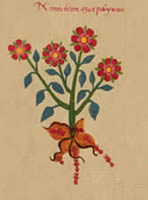
Nonochton is the Classical Nahuatl name for a plant whose identity is uncertain. Suggested plants include Portulaca , Pereskiopsis , [1] and Lycianthes mociniana , a plant now called tlanochtle in the local variety of modern Nahuatl spoken by highland farmers that cultivate it for its fruit. [2]